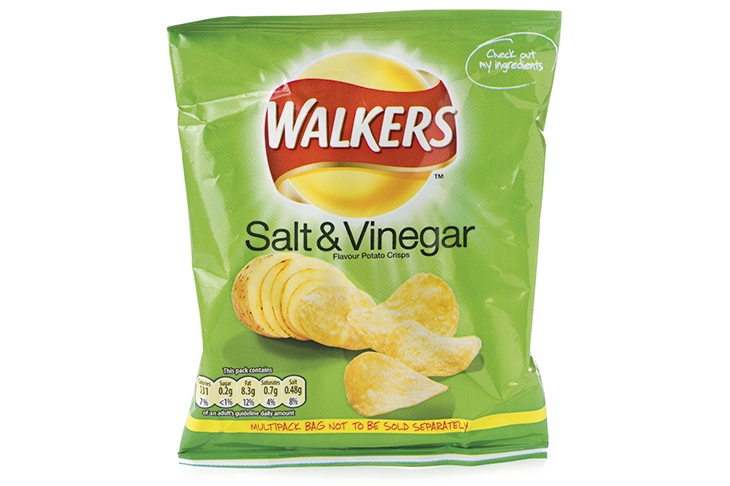Henry Walker might never have got into the crisp business were it not for the fact that his Leicester butcher’s shop was hit by meat rationing after the second world war. In 1948, when Walkers and Son started looking at alternative products, crisps were becoming increasingly popular — and so they shifted to hand-slicing and frying potatoes. The crisps were sprinkled with salt and sold for threepence a bag.
Fast-forward 73 years and Walkers crisps are so integral to our way of life that when I bought a six-pack of salt and vinegar the other day and noticed they had changed the recipe it precipitated a personal crisis resulting in sleepless nights. ‘Bursting with more flavour,’ said the redesigned pack. ‘Oh no, why do they always have to ruin the things I like by making them better?’ thought I. My favourite snack tasted as though they had added more vinegar, perhaps in a bid to keep up with those posh Kettle Chips soused in balsamic.
Despite my anguish, maybe I should not have been surprised. The crisp game is fickle. In fact, Henry enjoyed just a few years of plain sailing with his simple bag of unflavoured crisps before in 1954 Joe ‘Spud’ Murphy, owner of the Irish crisp company Tayto, developed a technique to add cheese and onion seasoning. Walkers brought out its own cheese and onion flavour later that year, then launched salt and vinegar in 1967 and prawn cocktail in the 1970s. There followed roast chicken, smoky bacon, pickled onion and beef and onion.
Since a 1980s pub owner in Wales brought out ‘hedgehog’ crisps (which famously did not contain hedgehog), Walkers has been forced to resort to many experimental, headline-grabbing flavours, including Cajun squirrel, chilli and chocolate, crispy duck, onion bhaji, fish and chips and builder’s breakfast. Unsurprisingly, though, it’s the less exotic flavours that are the bestsellers. The ready salted, cheese and onion, salt and vinegar troika is the main reason Walkers accounts for nearly half the British crisp market, producing more than 11 million bags a day using 800 tons of potatoes.
Walkers was acquired in 1989 by Frito–Lay, a division of PepsiCo, and ten years later PepsiCo transferred ownership of its Walkers brands out of Britain into a Swiss subsidiary, Frito-Lay Trading GmbH, prompting a right old hoo-ha of a tax row.
The Leicester-born former footballer Gary Lineker has starred in the company’s adverts since 1995. When I visited the website to get some answers about the change in the flavour once dubbed ‘Salt and Lineker’ (resurrected by Walkers last week as part of a football-themed range), a simulated goatee–bearded Gary popped up in a window gurning at me, which I found terrifying.
Virtual Lineker wasn’t able to help me, so I put in a call to the corporate office of PepsiCo Walkers. A spokeswoman issued the following statement, confirming my suspicions: ‘While we’ve kept the core recipe of our salt and vinegar crisps the same, we often make tweaks here and there to add more depth to the flavour that the nation loves.’ I’m heartbroken.







Comments